MARIUPOL, Ukraine – The glory days of the volunteer fighting units of the ultra-nationalist Right Sector organization are over – at least for now.
The controversial group has been riven by disagreements over politics, and the need to integrate with Ukraine’s military command structure. While there are two splinter groups still operating independently in the war zone, around 130 former Right Sector fighters are now contracted soldiers in the Ukrainian army proper.
The original Right Sector unit was fiercely independent, and formidable in battle. Its members known for their far-right and ultranationalist views and close camaraderie.
In the bloodiest clashes in Ukraine’s east, such as the tragic battle of Donetsk Airport, the Right Sector paramilitaries stood apart from other Ukrainian forces, having no legal status on the battlefield.
But as the war ground on, Ukraine started to bring the volunteer units under official control. The groups had sprung up in the early months of 2014 to defend Ukraine, when the national army was in disarray and could field barely 6,000 men. But as the army rebuilt itself, and the war transformed into static trench warfare, and Ukraine absorbed the volunteer units into the regular army and National Guard.
All but the Right Sector group, which remained independent. However, it has since splintered into the DUK (Volunteer Ukrainian Corps, led by Andriy Stenpytskiy) and the UDA (the Ukrainian Volunteer Army, led by the former Right Sector leader Dmytro Yarosh.) These are the last remaining independent military units still operating in the war zone: the others were either dissolved or absorbed by other units.
A group of 130 Right Sector fighters initially signed up with Ukraine’s 54th Mechanized Brigade, on the condition that they remain together as a company. However, after only a year the army split the group up and posted them to six different units.
About 40 of the fighters managed to stay together in the army’s Donbas-Ukraine Battalion, deployed near the stronghold city of Mariupol some 620 kilometers southeast of Kyiv, protecting nearly 500,000 people.
Myth’s death
It’s late October at the war front on the banks of the Kalmius River northeast of Mariupol, and soldiers from the Donbas-Ukraine Battalion are hard at work repairing trenches and dugouts in the cold wind and rain.
The former nationalist irregulars mark themselves out by wearing sleeve patches with images of three raging wolves – they are proud of their former combat history with the Right Sector forces.
For them, the decision to join the army came a little more than a year ago, after one of the most painful losses the Right Sector had ever sustained.
Back in the summer of 2016, the DUK’s 1st Assault Company was holding positions in the so-called Svitlodarsk Bulge near the occupied city of Debaltseve, along with the army’s 54th Mechanized Brigade. At that time the DUK fighters still had no legal status.
Early on June 29, Ukrainian forces attacked the enemy lines to knock Russian-led forces out of their forward positions near the enemy-controlled village of Logvynove. The sortie failed, with the Right Sector losing two of its men. One of them was Vasyl Slipak, an internationally famous Ukrainian-born Paris opera baritone, who had turned volunteer fighter and went by the nom-de-guerre “Myth.”
His tragic death was a shock to the whole country.
It was even more painful for his comrades-in-arms, says Mykola Schafaliuk, the Right Sector commander who led the squad that day.
“We decided that enough was enough – we really needed to legalize ourselves in the army,” Schafaliuk says. “After Myth’s death, the questions of what were we doing in the war zone without any paperwork became too insistent.”
The Right Sector fighters made one condition to the army command: they wanted to be allowed to serve together in the same company. The brigade agreed, and some 130 fighters became contract servicemen more than two years after first going to war.
However, not all of them found it easy to adjust to life in the regular army.
“For instance, we’re used to obeying the commands of those we really respect, of those who have gained authority with their bravery and wisdom in battle,” Shafaliuk said as he dug at the earthen floor of a fortified dugout.
“Of course, we did not like to listen to someone just because he’s a senior officer. We’ve never given up our volunteer war drive, and Cossack traditions.”
Then, after a year of service in the army ranks, the brigade’s command eventually decided to split the fighters between six different combat units spread along the front line. As soon as they saw the order on paper, the former Right Sector fighters went on hunger strike in protest.
“We’re all brothers and sisters, we’ve been together since 2014. I defended Donetsk airport with many of those guys. There was no way I would leave them,” Shafaliuk said as he mopped his brow in a break from digging.
Army haven
One of the senior officers who had promised to keep the fighters together was Colonel Vyacheslav Vlasenko, the commander of the Donbas-Ukraine Battalion, who goes by the codename “Eagle-Owl.”
The original Donbas Battalion initially formed in the spring of 2014 as a poorly armed partisan party of pro-Ukrainian civilians led by Semen Semenchenko, a current member of the Verkhovna Rada.
In the following months, the unit, approved for service by the National Guard, was engaged in many clashes, including the deadly battles of Ilovaisk and Debaltseve, and sustained heavy casualties.
In January 2015, the battalion split, with most of the surviving soldiers, disaffected with Semenchenko, following Vlasenko and forming a separate special forces unit under the command of the Ukrainian military.
The battalion is still fighting on the frontline, but is also in a bitter feud with its former leader over his political career.
“None of us has any ambitions in Kyiv, and we strongly condemn exploiting the war to get a seat in parliament,” said the battalion’s chief of staff, Major Vasyl Hetman. “We are soldiers, and our task is to defend the country right to the end. We belong on these combat lines, not in politics.”
As it was part of the volunteer movement of 2014, the Donbas-Ukraine Battalion has preserved many of the customs traditionally for Ukrainian volunteer units. Its soldiers and officers still usually address each other by codenames, adding “brother” or “friend.” Not a drop of alcohol is tolerated in the unit, and only volunteers can join.
Only 40 Right Sector fighters accepted Vlasenko’s call to join the battalion in July. But in a surprise even for themselves, they finally found what they were looking for after they were assigned to the battalion’s 2nd Assault Company.
“I’d say we are happy in general now,” Shafaliuk said. “In my opinion, this is the last army unit where the spirit of 2014 is still alive. We don’t always totally agree with the commanders, but at least we understand them. Also, there is much less of the Soviet-style disorder and negligence here. And after all, Eagle-Owl has kept his word – we’re all fighting in the same unit now.”
“You know what’s the difference between the military and the volunteers?” another former Right fighter Eduard Zheleznyak, codename “Kid”, laughs as he watches the enemy lines across the river from inside an observation post. “For the military, this war is a job – it’s their lifetime career.”
“But we volunteers came to the war to win it – and then go home to our families again.”
Find more photos of the Donbas-Ukraine Battalion in a special gallery by Volodymyr Petrov here
You can also highlight the text and press Ctrl + Enter


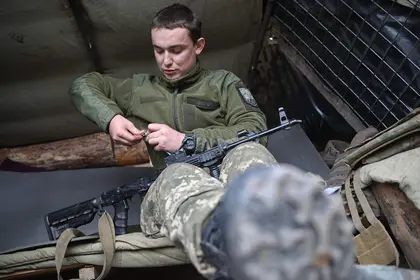
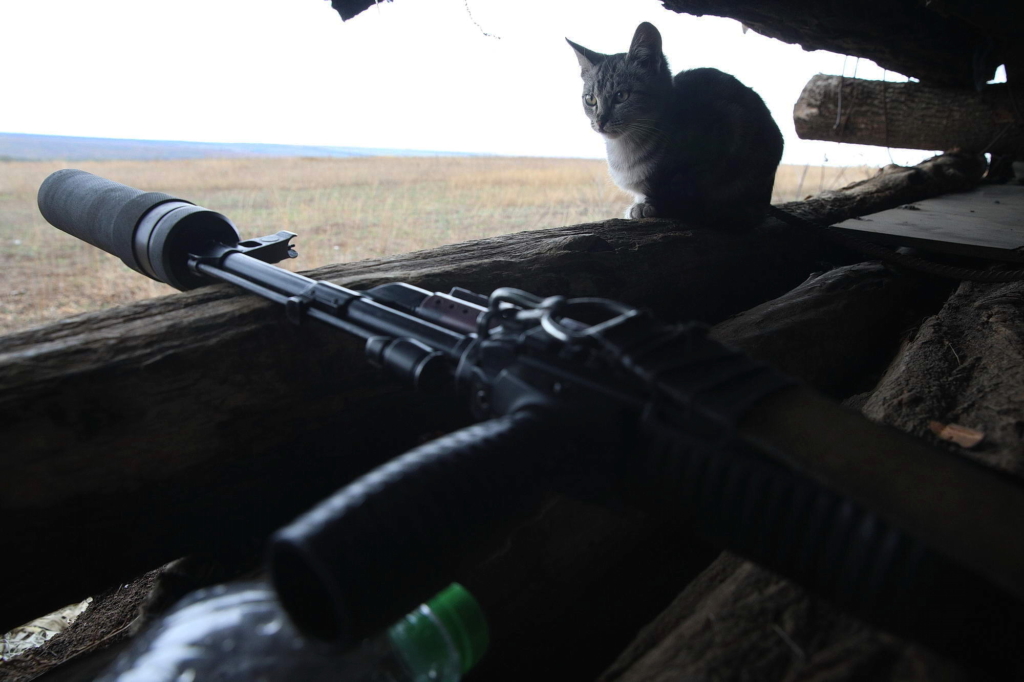
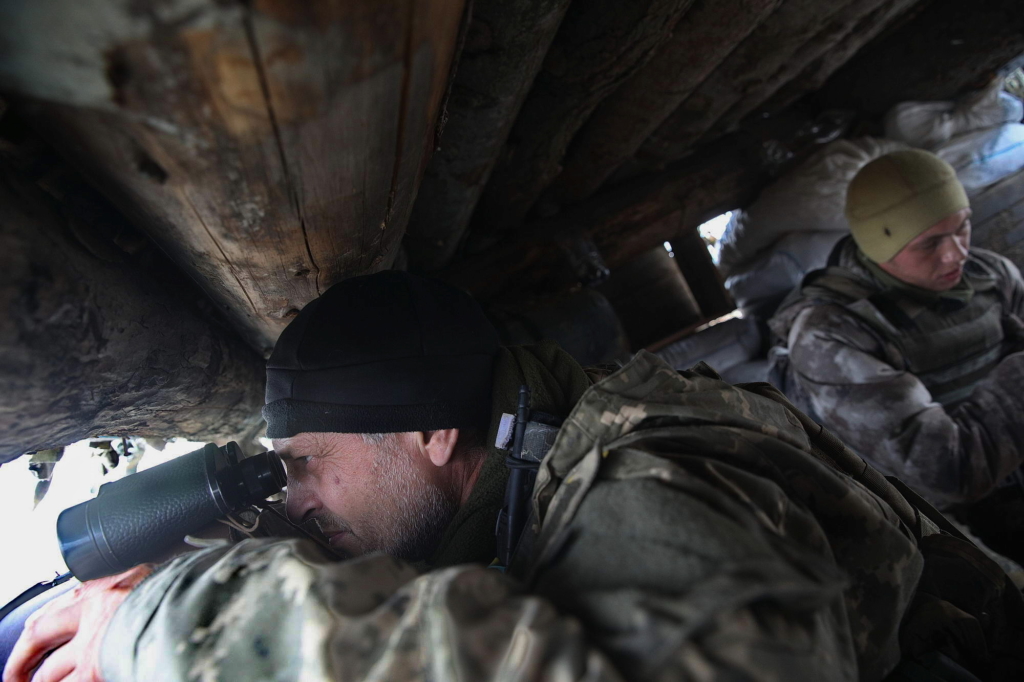


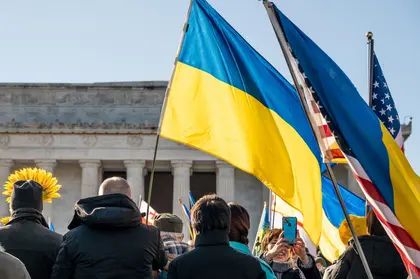
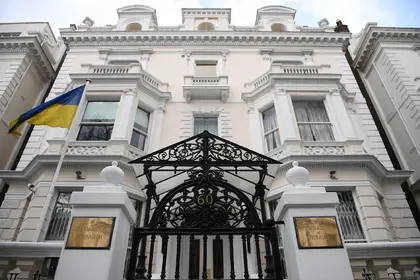
Comments (0)